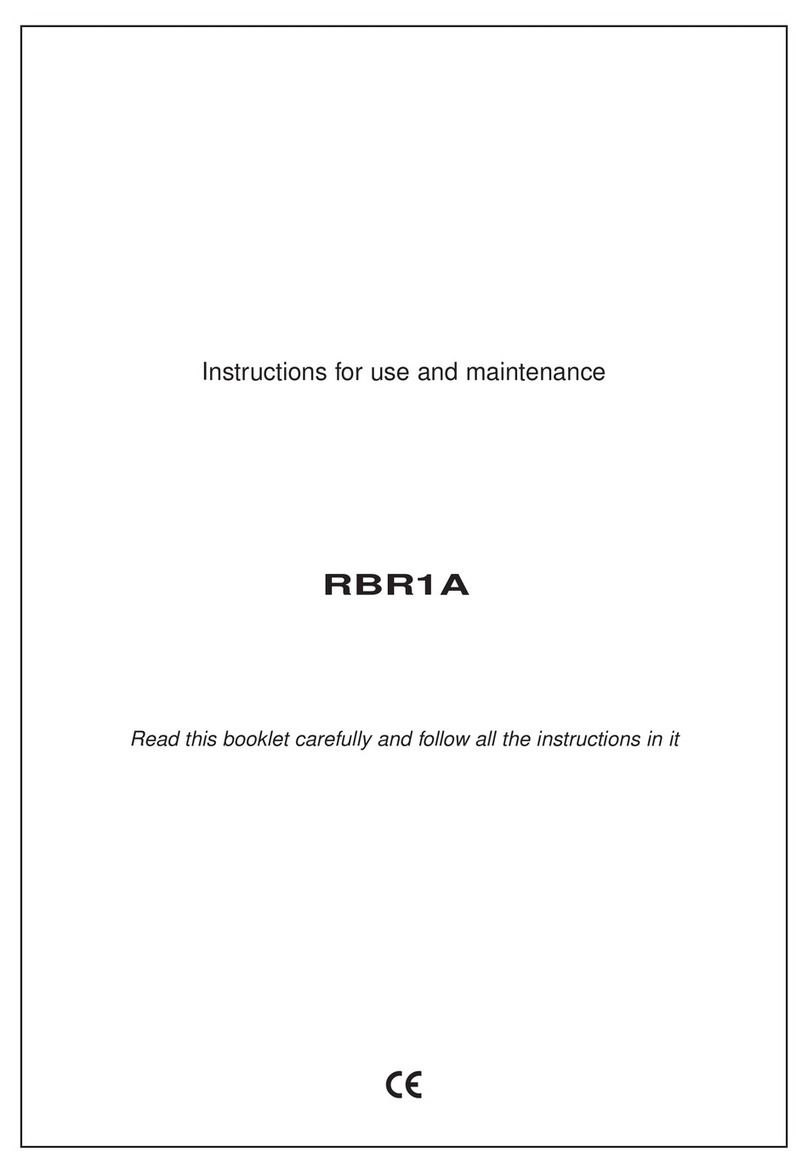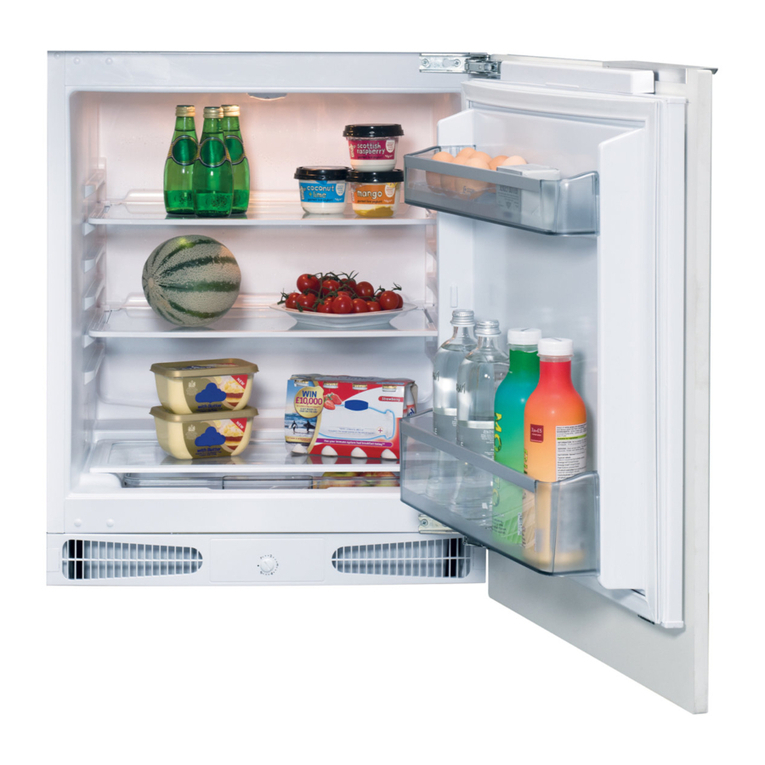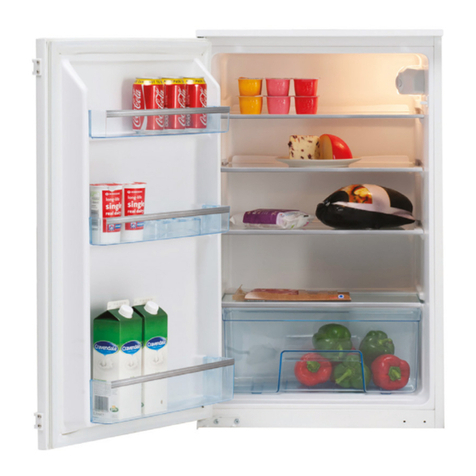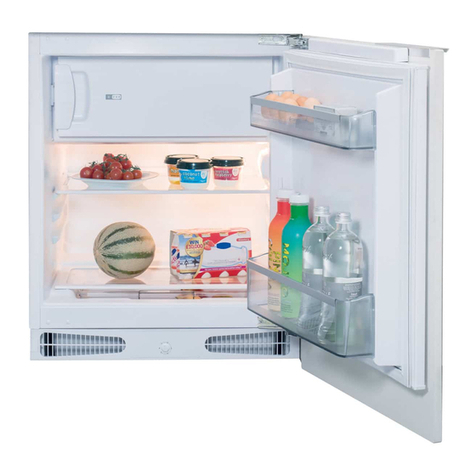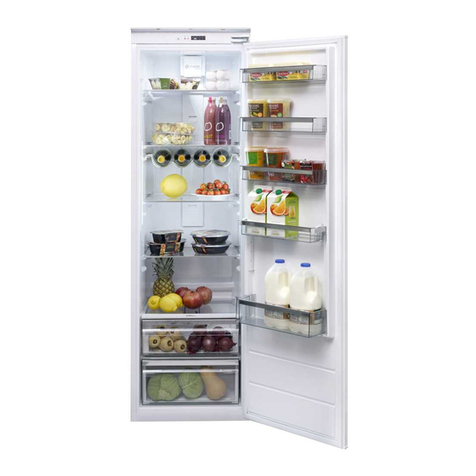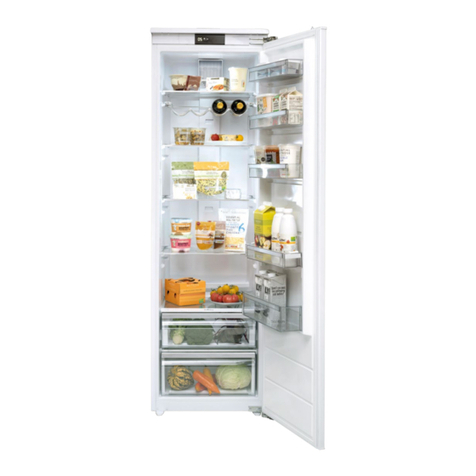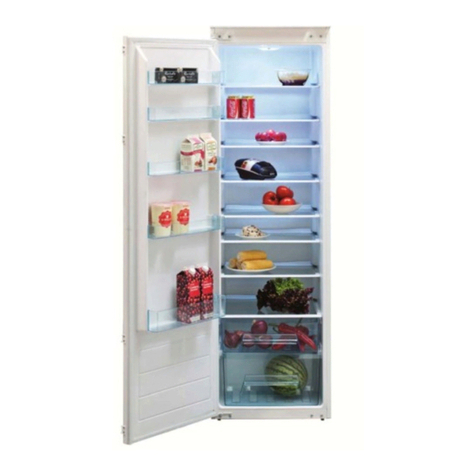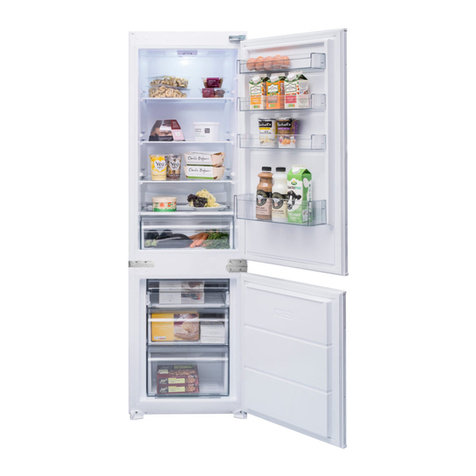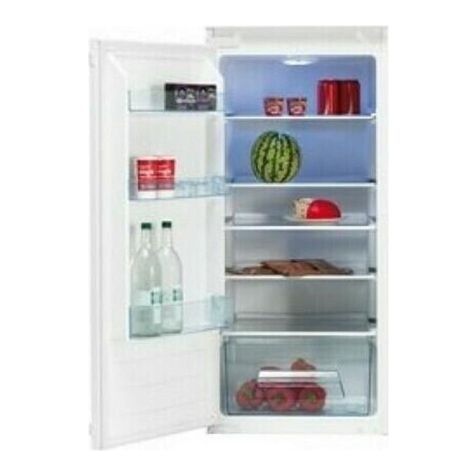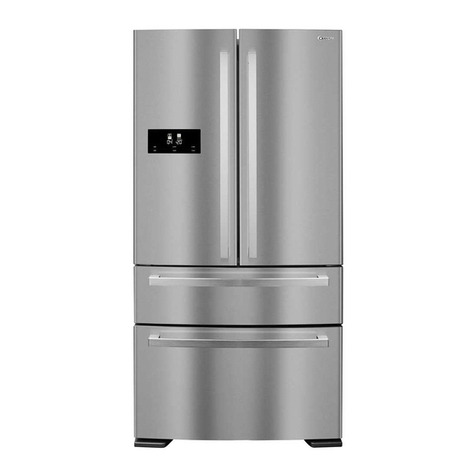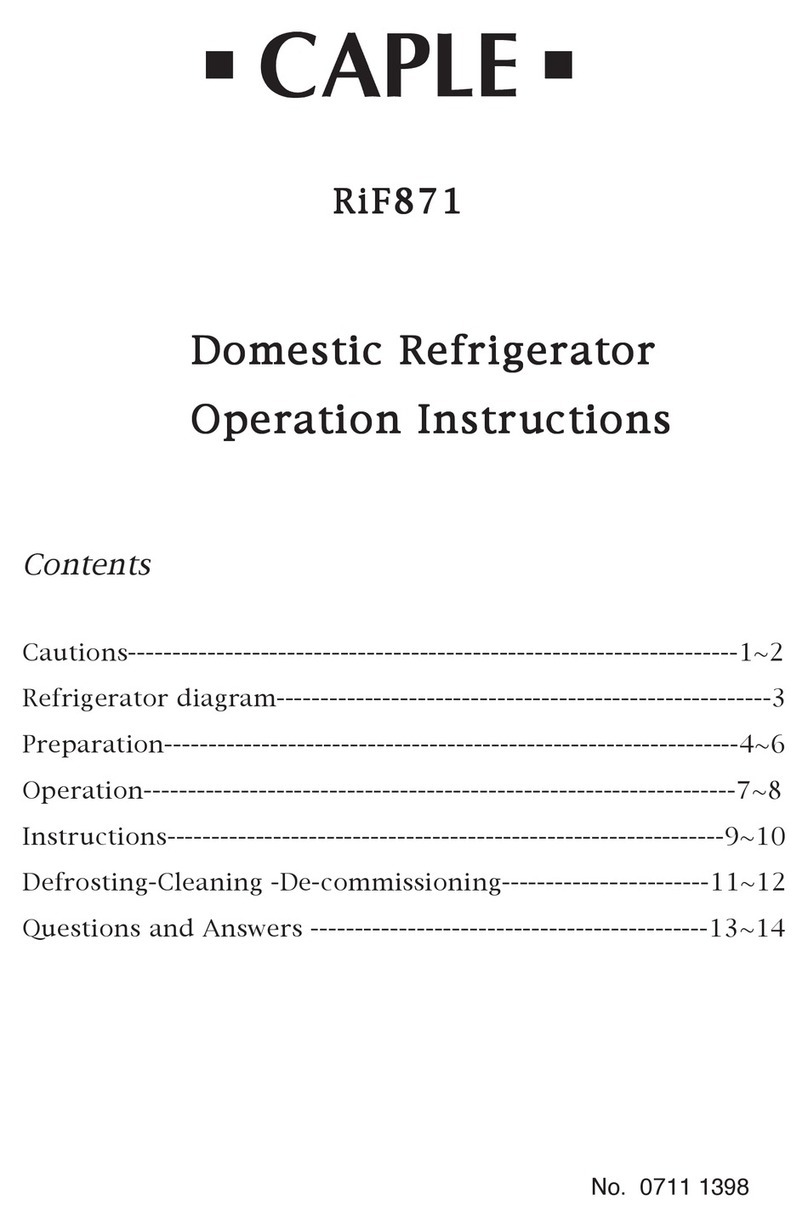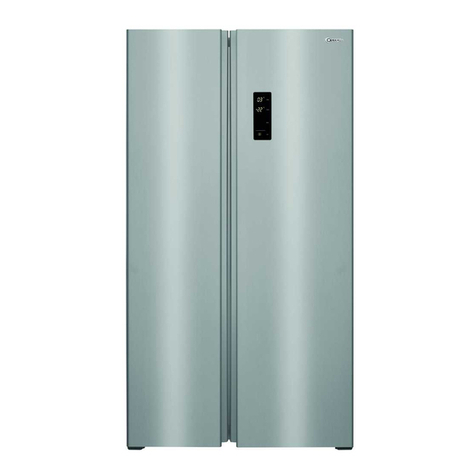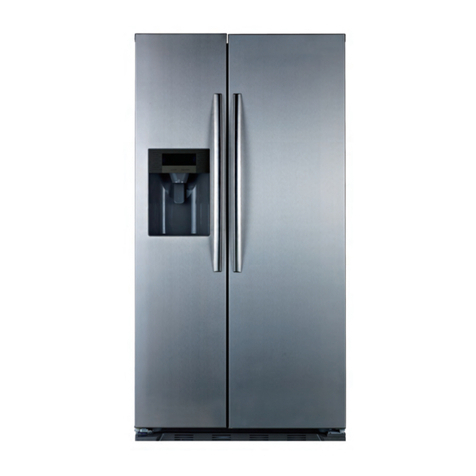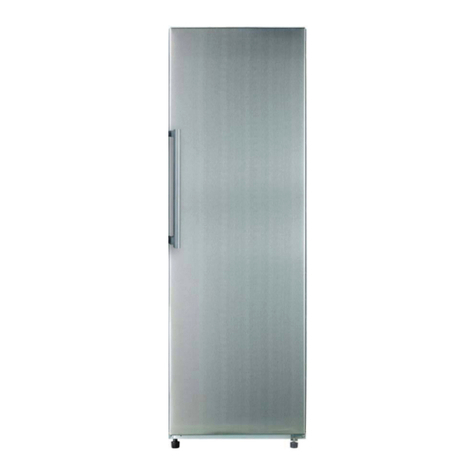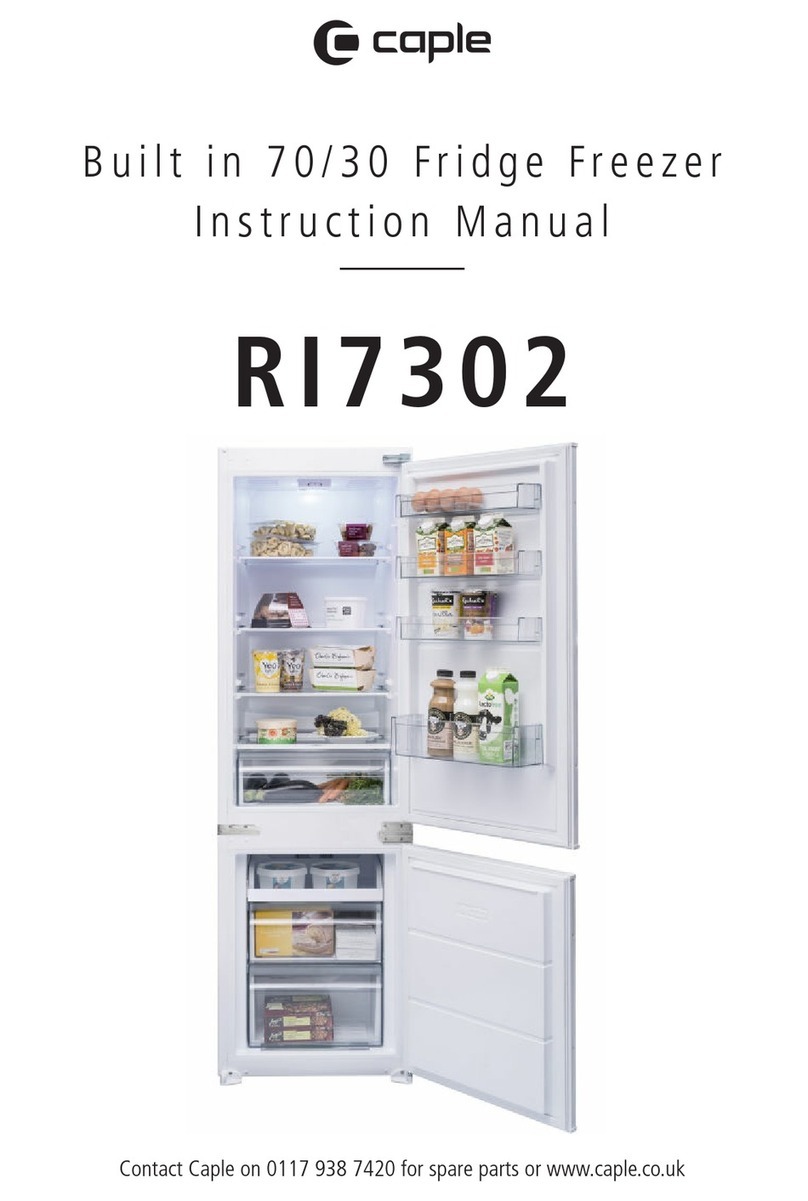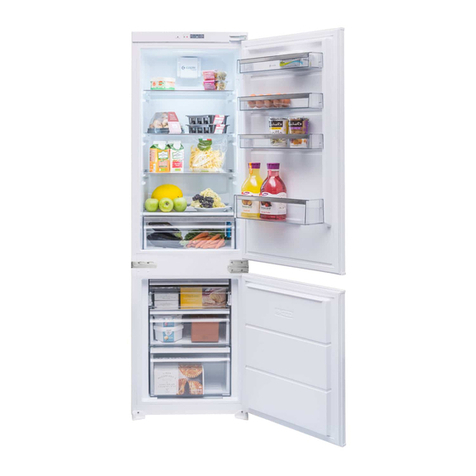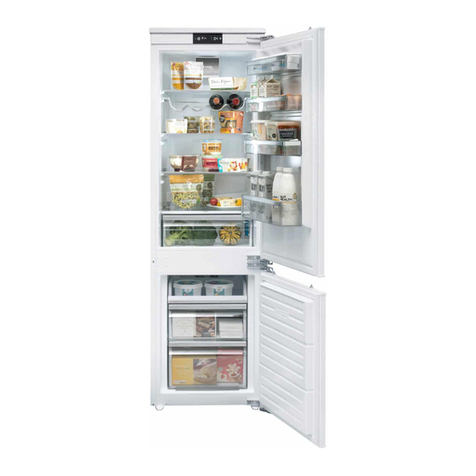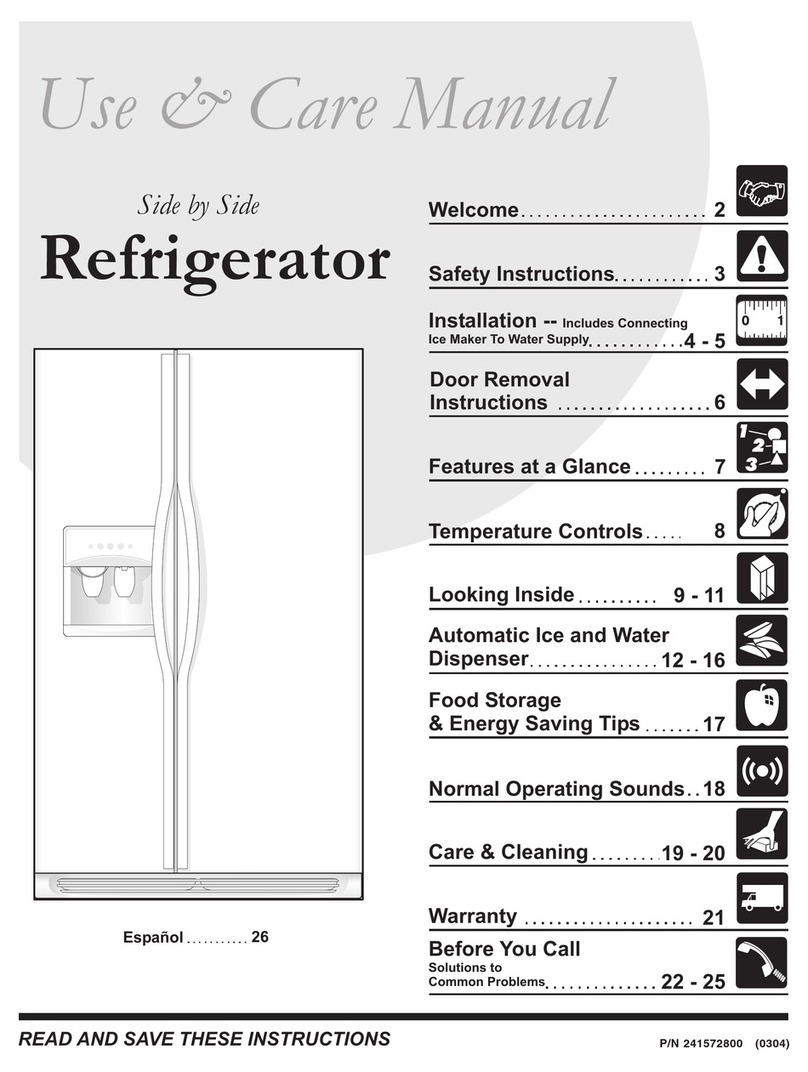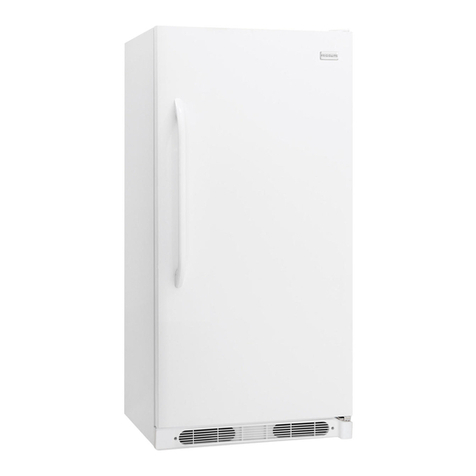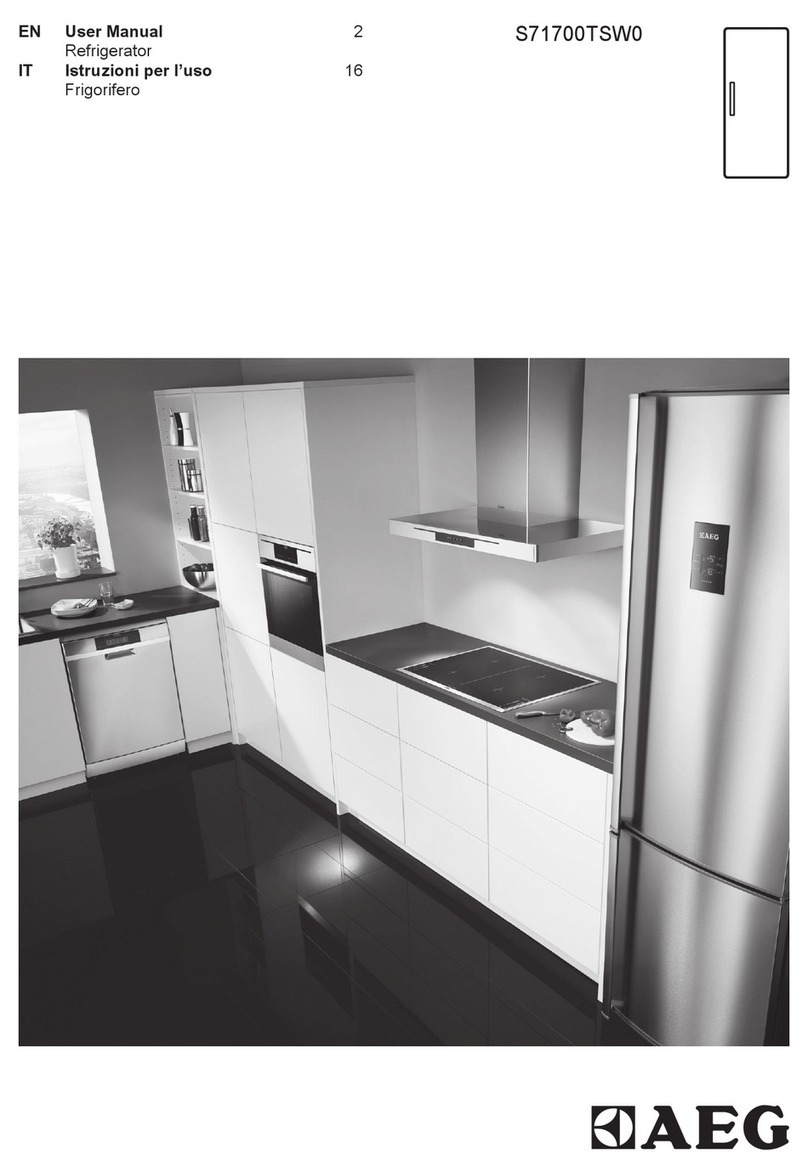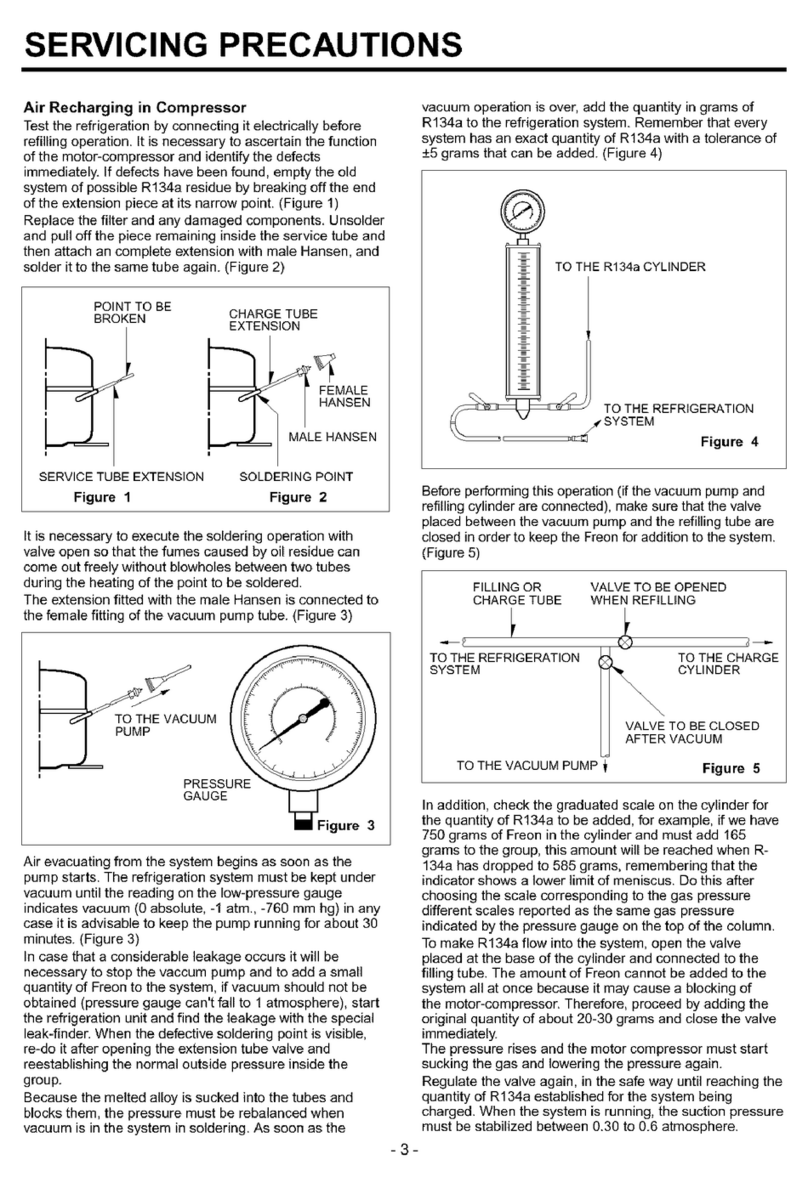
16 17Instruction manual RBL5 Instruction manual RBL5Please keep this instruction manual for future reference Please keep this instruction manual for future reference
Your fridge is designed to operate in the ambient temperature intervals stated in the standards,
according to the climate class stated in the information label. We do not recommend operating
your fridge out of stated temperatures value limits in terms of cooling effectiveness.
This appliance is designed for
use at an ambient temperature
within the 10°C - 32°C range.
OPERATING YOUR FRIDGE
THERMOSTAT SETTING
The thermostat automatically regulates
the inside temperature of the
refrigerator. By rotating the knob from
position 1 to 5, colder temperatures
can be obtained.
IMPORTANT NOTE
Do not try to rotate knob beyond 1 position it will stop your appliance.
› For short-term storage of food in the fridge, you can set the knob between minimum and
medium position (1-3).
› For long-term storage of food in the fridge, you can set knob medium position (3-4).
› Note that; the ambient temperature, temperature of the freshly stored food and how often
the door is opened, affects the temperature in the fridge. If required, change the temperature
setting.
› When you first switch on the appliance, you should ideally try to run it without any food in for
24 hours and not open the door. If you need to use it straight away, try not to put much food
inside.
› If the unit is switched off or unplugged, you must allow at least 5 minutes before restarting in
order not to damage the compressor.
FOOD STORAGE
REFRIGERATOR COMPARTMENT
› To reduce humidity and avoid the consequent formation of frost, always store liquids in
sealed containers in the refrigerator. Frost tends to concentrate in the coldest parts of the
evaporating liquid and, in time, your appliance will require more frequent defrosting.
› Never place warm food in the refrigerator. Warm food should be allowed to cool at room
temperature and should be arranged to ensure adequate air circulation in the refrigerator
compartment.
› Make sure no items are in direct contact with the rear wall of the appliance as frost will
develop and packaging will stick to it. Do not open the refrigerator door frequently.
› We recommend that meat and clean fish are loosely wrapped and stored on the glass
shelf just above the vegetable bin where the air is cooler, as this provides the best storage
conditions.
› Store loose fruit and vegetable items in the crisper containers.
› Store loose fruit and vegetables in the crisper.
› Storing fruit and vegetables separately helps prevent ethylene-sensitive vegetables (green
leaves, broccoli, carrot, etc.) being affected by ethylene-releaser fruits (banana, peach,
apricot, fig etc.).
› Do not put wet vegetables into the refrigerator.
› Storage time for all food products depends on the initial quality of the food and an
uninterrupted refrigeration cycle before refrigerator storage.
› To avoid cross-contamination do not store meat products with fruit and vegetables. Water
leaking from meat may contaminate other products in the refrigerator. You should package
meat products and clean any leakages on the shelves.
› Do not put food in front of the air flow passage.
› Consume packaged foods before the recommended expiry date.
CLIMATE CLASS AMBIENT TEMPERATURE
TBetween 16 and 43 (°C)
ST Between 16 and 38 (°C)
NBetween 16 and 32 (°C)
SN Between 10 and 32 (°C)
